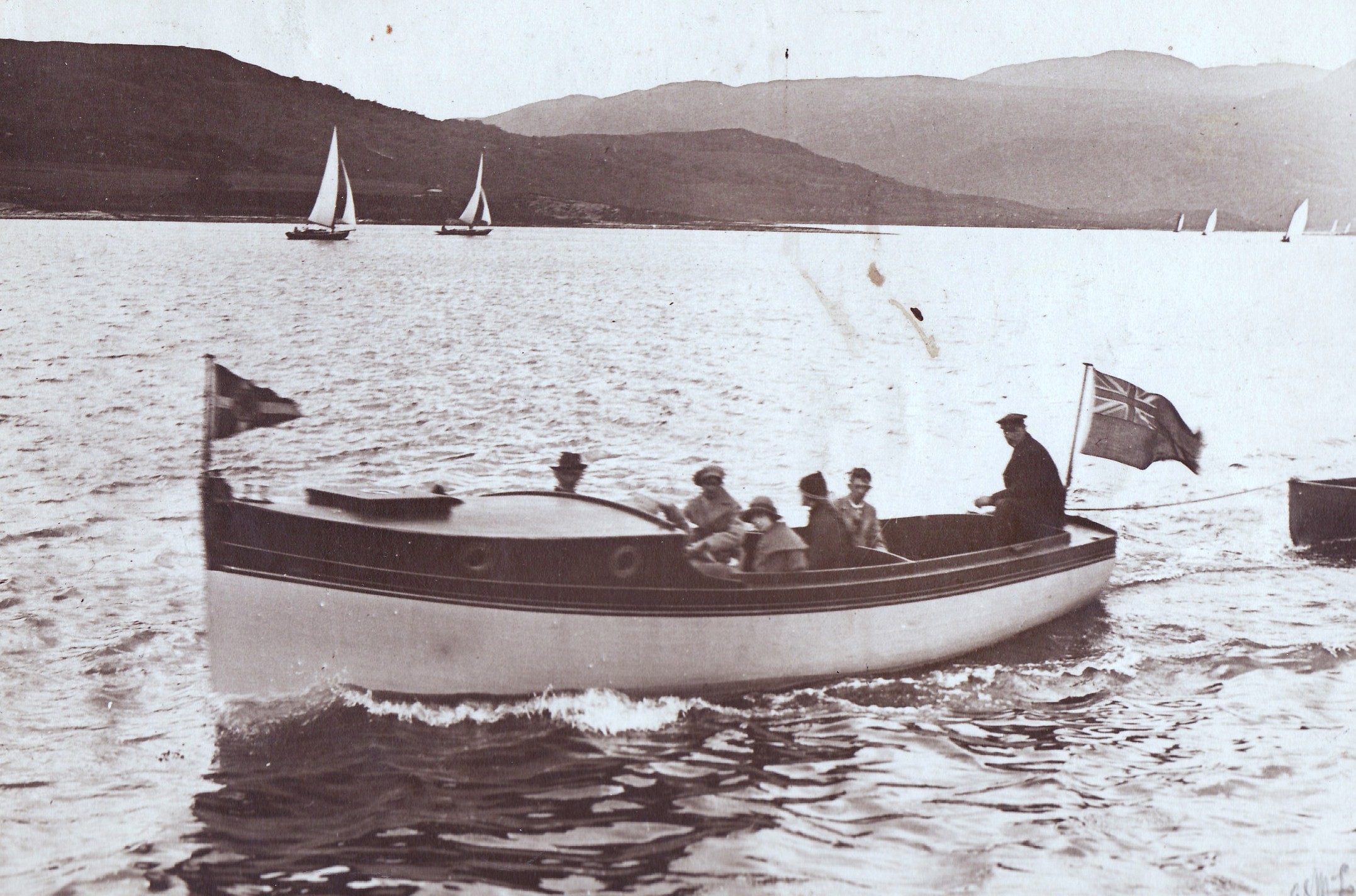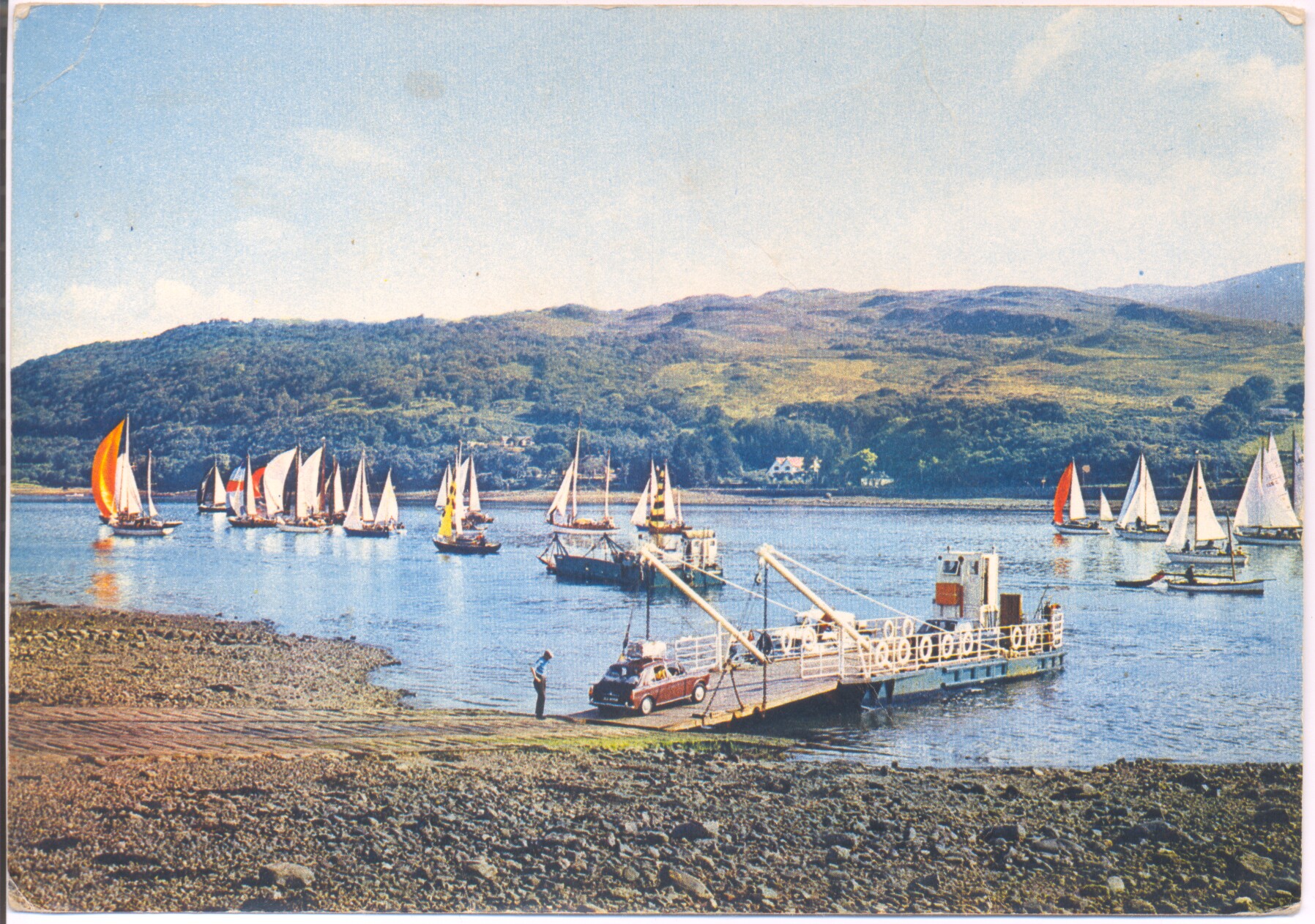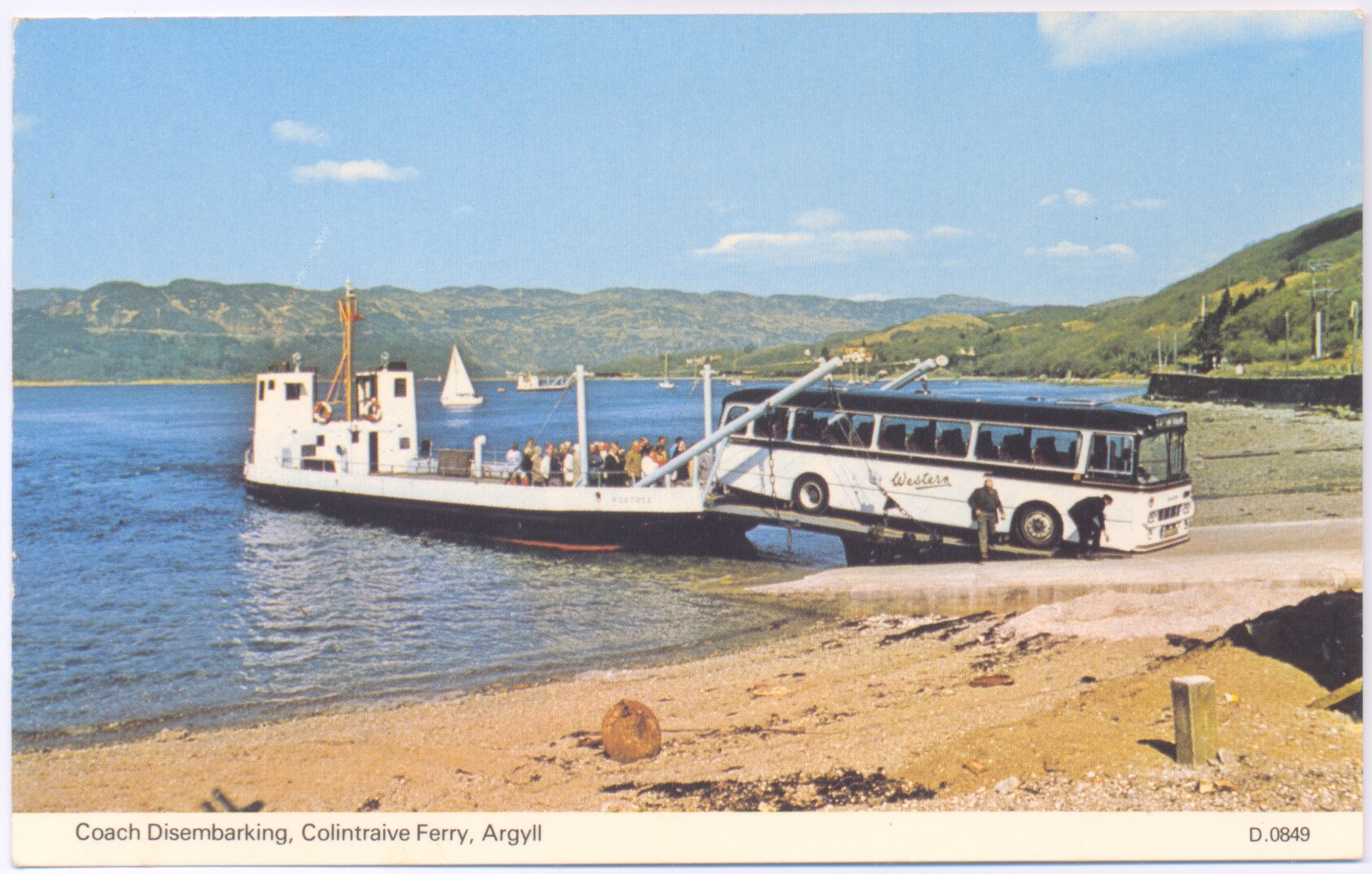The name Colintraive is thought to be derived from Caol an t-Snaimh – ‘the narrows of swimming’ because the crossing was used by drovers moving cattle from Cowal and Bute to lowland markets.
It was a natural crossing point and the first recorded mention of a ferry across the Kyle at Colintraive is in 1685 when James Boill who was in Ardentraive, and described as ”ferryor in Caillintraive” lost his herring nets and his boat, probably destroyed by the soldiers of Duke of Argyll crossing to his castle on Eilean Dearg.

There was also a ferry at Couston across Loch Striven to Inverchaolain, mentioned about 100 years later in 1782 when Archibald Lamond agreed to build a heather thatched ferryman’s house, 16 feet by 30 feet, all for £5. 5s. The ferry probably continued until the mid 1850’s when the parish church was still at Inverchaolain.

In 1804 John Campbell, laird of Southall, was one of the promoters of a new road from Loch Fyne through Glendaruel to the “Ferry of Cuilintrive” to “the great advantage of the numerous fishermen, as well as other inhabitants of these place” and when completed this road would have increased ferry traffic across to Bute.
A proposal for a vehicle ferry was made in 1929 and again in 1938, however the war intervened. and the project was dropped. In 1950 the Bute Ferry Company, owned by Bute Estates, operated the first 4 car ferry. It replaced the small motor boat, skippered by Archie Clark, who was also contracted to take mail between Bute, Colintraive and Tighnabruich.

In 1969 the Caledonian Steam Packet Company took over the service, becoming Calmac in 1973,

The main road to Colintraive was single track until 1981 when the present road was completed. Ferry traffic has since continued to increase and the present ferry, Loch Dunvegan, is capable of taking 36 cars and 200 passengers.